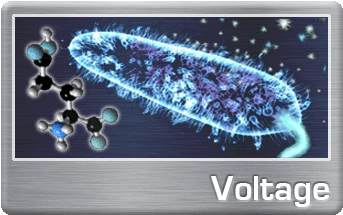Team:Cambridge/Voltage
From 2008.igem.org
| Line 24: | Line 24: | ||
We ordered a variety of mutant E.coli strains (link) with mutations in each of the genes coding for the potassium flux membrane proteins Kdp, Kch and Kef. To examine the behaviour of these mutant strains we grew them in a variety of potassium concentrations and used OD600 readings (link) to measure their growth rates (link). We also measured internal potassium concentrations (link) using flame photometry. Unfortunately there was little difference seen between most of the mutants and the control strain, and flame photometry readings were not always reliable. | We ordered a variety of mutant E.coli strains (link) with mutations in each of the genes coding for the potassium flux membrane proteins Kdp, Kch and Kef. To examine the behaviour of these mutant strains we grew them in a variety of potassium concentrations and used OD600 readings (link) to measure their growth rates (link). We also measured internal potassium concentrations (link) using flame photometry. Unfortunately there was little difference seen between most of the mutants and the control strain, and flame photometry readings were not always reliable. | ||
We used PCR to copy the Kdp sequence from the E.coli MG1655 genome (link). As the pump is an ATPase, we did not want it to be expressed during exponential phase as it could stunt growth. We therefore also used PCR to extract the osmY promoter (link) from Biobricks developed by MIT in 2006. It is a stationary phase promoter, so by putting Kdp under its control, we could postpone its expression until the cells have stopped needing ATP for growth and division. Unfortunately the ligation and expression of the osmY-Kdp construct proved impossible (link) and so it did not form part of our final tests. Instead, we simply grew the E.coli in high K+ concentrations (100mM) and re-suspended them in low [K+] before adding the agonist, glutamate. | We used PCR to copy the Kdp sequence from the E.coli MG1655 genome (link). As the pump is an ATPase, we did not want it to be expressed during exponential phase as it could stunt growth. We therefore also used PCR to extract the osmY promoter (link) from Biobricks developed by MIT in 2006. It is a stationary phase promoter, so by putting Kdp under its control, we could postpone its expression until the cells have stopped needing ATP for growth and division. Unfortunately the ligation and expression of the osmY-Kdp construct proved impossible (link) and so it did not form part of our final tests. Instead, we simply grew the E.coli in high K+ concentrations (100mM) and re-suspended them in low [K+] before adding the agonist, glutamate. | ||
| - | Transformation of the GluR0 plasmid into the mutant strains mentioned earlier did not work. Instead, we tried transforming into the more traditional expression strain | + | Transformation of the GluR0 plasmid into the mutant strains mentioned earlier did not work. Instead, we tried transforming into the more traditional expression strain DH5 alpha Z1, with success. Using very sensitive electrodes connected to an amplifier and oscilloscope we have been able to see voltage changes on application of glutamate to the medium. |
Revision as of 21:10, 28 October 2008
|
||||
 "
"
